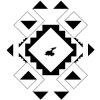History of Hereke Carpets
Hereke is a town in Kocaeli, located in the Northwest of Turkey, near of Istanbul. The town is famous thanks to its carpet weaving culture and history. Some of the best handknotted pile carpets in the history of Anatolian carpet weaving were knotted in Hereke.
In the year of 1841, the Ottoman Sultan, Abdulmecid, has established Hereke weaving Imperial Factory to to produce finest textiles for Dolmabahce Palace. After the establishment of the Factory, the carpet-weavers here produced finest quality of rugs, curtains and upholsteries. At the beginning, products of this Factory were only used in palaces or they were given as gifts to some royalty and noblemen.
Towards the middle of 20th Century, the Factory was re-established after a long break. The Factory was considered as carpet making school to many weavers and the carpets produced here received many international awards. After a decades of work by the supervision of the Turkish Government, the Factory permanently ended its carpet producing function at the beginning of 21st Century.
Hereke carpets are typically very large, palace-sized carpets, and they are made with wool on cotton, camel hair on cotton, silk on cotton, as well as silk on silk, which are knotted in small sizes. However, in time many different sized and patterned Hereke carpets have been weaved in the Factory and sold in market.
Hereke carpet is woven in two ways: wool on cotton yarn and silk on silk. There are 3600 loops per dm² of wool carpets. In silk carpets, there are 10.000 loops per dm². The more loops in per centimeter, the higher quality the carpet is likely to become.
Some of the most known designs of Hereke are flowers, birds, the tree of life, and prayer niches (mihrabs), flowers of seven mountains, polonez, tulips, Watermelons, and flowers of fields

A carpet weaver’s blood on wefts of the carpet in Hereke Weaving Premises.


